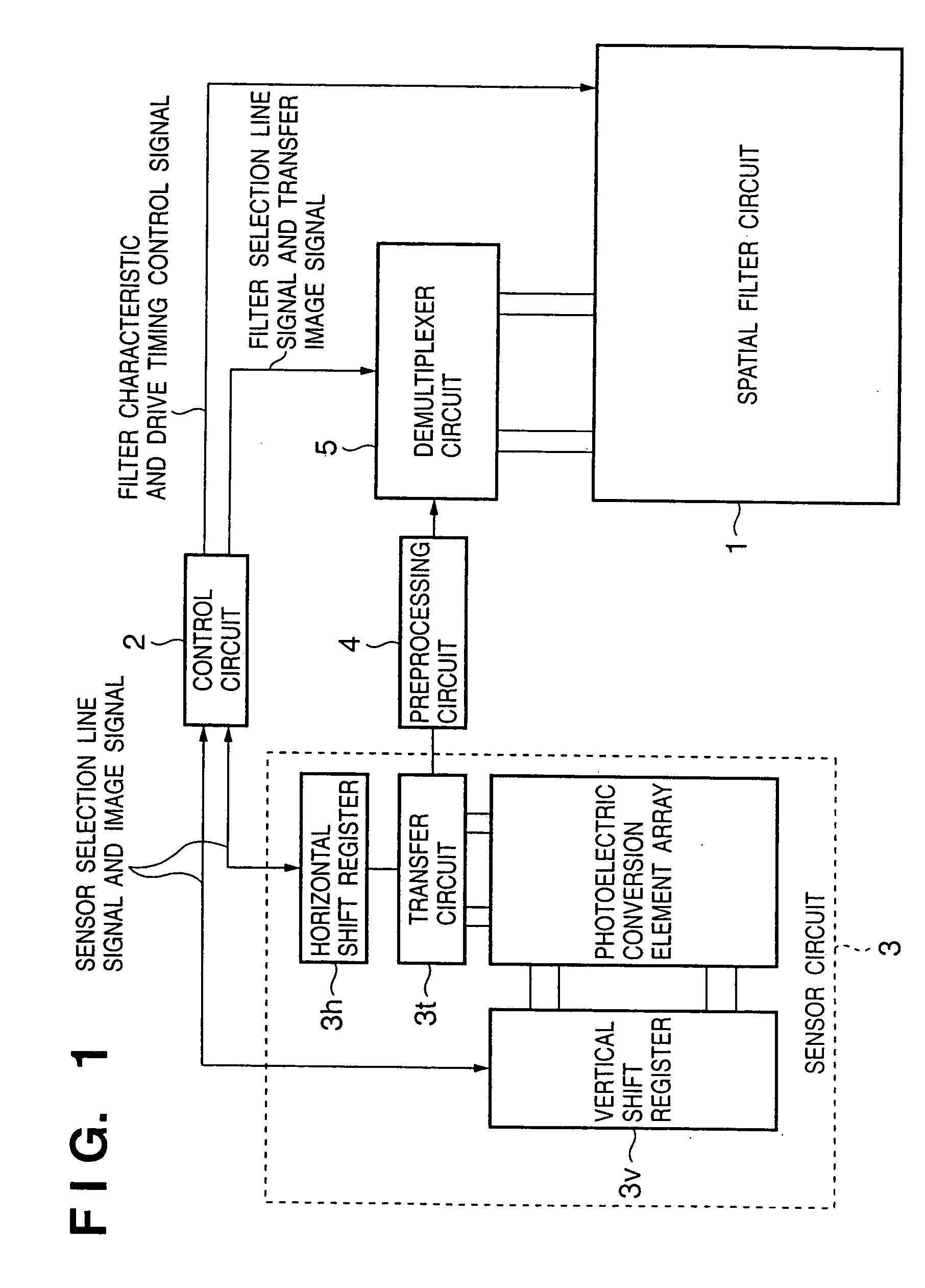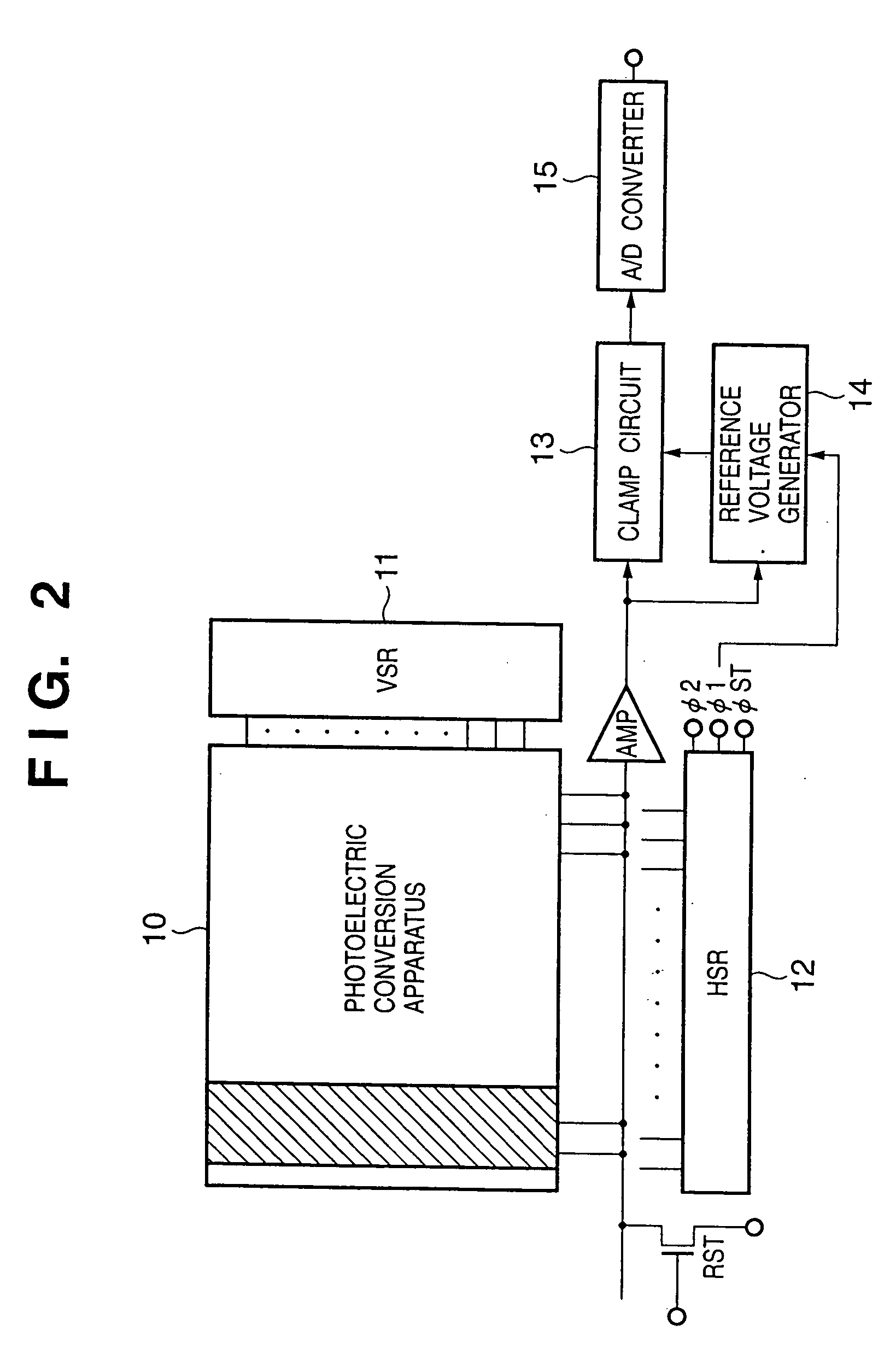Dynamically reconfigurable signal processing circuit, pattern recognition apparatus, and image processing apparatus
a signal processing circuit and dynamic reconfiguration technology, applied in the field of dynamic reconfiguration of signal processing circuits, pattern recognition apparatuses, image processing apparatuses, can solve the problems of not ensuring optimal estimation, difficult application of methods, and inability to efficiently sequentially extract plurality of predetermined different geometrical features.
- Summary
- Abstract
- Description
- Claims
- Application Information
AI Technical Summary
Benefits of technology
Problems solved by technology
Method used
Image
Examples
first embodiment
[0110]FIG. 1 is a block diagram showing the overall arrangement of an image sensing signal processing circuit according to the first embodiment.
[0111] Referring to FIG. 1, a spatial filter circuit 1 time-serially executes predetermined spatial filter operations having different characteristics at points corresponding to the respective pixel positions, on the sensor, of a video signal input from a sensor circuit 3. The spatial filter circuit 1 has a function of time-serially extracting different geometrical image features for regions with a predetermined size around the respective points of a video signal.
[0112] A control circuit 2 outputs a predetermined read control pulse signal to the sensor circuit 3 in accordance with a predetermined timing and also outputs a timing pulse signal synchronous with the read control pulse signal to the spatial filter circuit 1, thereby synchronously processing the output from the sensor circuit 3 and the spatial filter circuit 1, as will be descri...
second embodiment
[0166]FIG. 6 is a block diagram showing the arrangement of main part of the second embodiment. According to this arrangement, the memory element Cm at the input unit of the spatial filter circuit element shown in FIG. 3 is unnecessary. Of a sensor circuit output, a necessary portion corresponding to a predetermined spatial filter circuit element to be time-serially accessed is temporarily recorded in a block memory 6. Then, pixel data in the block memory 6 are read out at once (time-serially in the case of the first embodiment where the memory element Cm is used in the circuit shown in FIG. 3) as voltage signals, and the above-descried spatial filter processing is performed.
[0167] In this embodiment, a control circuit 2 sends, of spatial filter characteristic parameters (m,n), a scale control signal corresponding to the scale parameter m to a sensor circuit 3 side together with an address selection signal. The horizontal and vertical selection circuits (3h and 3v) in the sensor cir...
third embodiment
[0172]FIG. 7 shows the arrangement of main part of the third embodiment. Timing control characteristic of a sensor circuit 3, i.e., the modulation timing control on a spatial filter circuit 1 side is done using a read control signal used in a normal CMOS sensor. In this case, interlaced read control as in the first embodiment is done.
[0173] With this arrangement, the read timing control about the CMOS sensor circuit 3 or the internal interconnection of a transfer circuit 3t or the like need not be changed. Hence, stable spatial filtering operation can be executed using an existing CMOS sensor chip or the like.
[0174] A control circuit 2 receives selection line signals in the sensor read mode to obtain the address information of an image signal and executes transfer control of the image signal to a spatial filter circuit element at a corresponding position.
[0175] At this time, characteristic control signals for circuit elements (resistors and transconductance amplifiers) shown in F...
PUM
 Login to View More
Login to View More Abstract
Description
Claims
Application Information
 Login to View More
Login to View More - R&D
- Intellectual Property
- Life Sciences
- Materials
- Tech Scout
- Unparalleled Data Quality
- Higher Quality Content
- 60% Fewer Hallucinations
Browse by: Latest US Patents, China's latest patents, Technical Efficacy Thesaurus, Application Domain, Technology Topic, Popular Technical Reports.
© 2025 PatSnap. All rights reserved.Legal|Privacy policy|Modern Slavery Act Transparency Statement|Sitemap|About US| Contact US: help@patsnap.com



